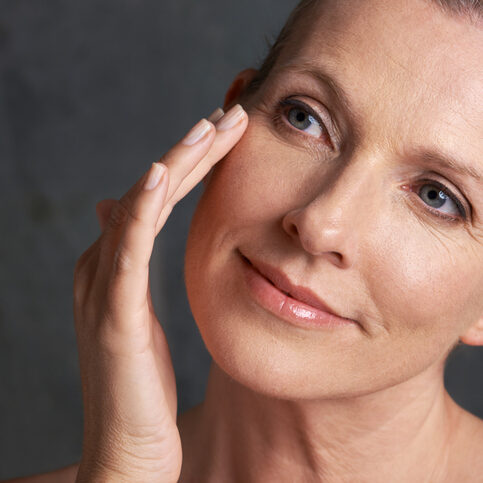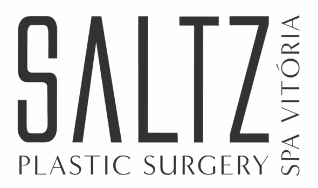Fat Grafting

Fat Grafting

Fat Grafting


What is Fat Grafting?
Fat grafting, also called fat transfer or lipofilling, is a natural way to restore or enhance volume using your own fat. Instead of relying on synthetic fillers or implants, fat is gently removed from one area of your body—such as the abdomen, flanks, or thighs—purified, and then strategically placed where you want more shape or fullness.
Because it uses your own tissue, fat transfer feels soft, looks natural, and provides long-lasting results. At Saltz Plastic Surgery & Spa Vitoria, this approach is customized to refresh facial features, sculpt the body, or enhance the breasts—helping you look more balanced, youthful, and confident.
Fat Grafting vs. Implants or Fillers
One of the main advantages of fat transfer is that it uses your own tissue, which eliminates the risks of rejection or allergic reaction. Here’s how it compares:
- Versus Implants (Breast or Buttock): Implants can create dramatic size increases, but they involve a foreign material. Fat transfer offers a more natural look and feel, with subtle to moderate enhancement.
- Versus Fillers (Face): Fillers are great for quick improvements, but they require repeat treatments every 6–12 months. Fat transfer lasts longer and may improve skin quality due to regenerative stem cells found in fat.
- Bonus Benefit: Fat transfer slims donor areas (like the abdomen or thighs) through liposuction, enhancing your overall silhouette.

What is Fat Grafting?
Fat grafting, also called fat transfer or lipofilling, is a natural way to restore or enhance volume using your own fat. Instead of relying on synthetic fillers or implants, fat is gently removed from one area of your body—such as the abdomen, flanks, or thighs—purified, and then strategically placed where you want more shape or fullness.
Because it uses your own tissue, fat transfer feels soft, looks natural, and provides long-lasting results. At Saltz Plastic Surgery & Spa Vitoria, this approach is customized to refresh facial features, sculpt the body, or enhance the breasts—helping you look more balanced, youthful, and confident.
Fat Grafting vs. Implants or Fillers
One of the main advantages of fat transfer is that it uses your own tissue, which eliminates the risks of rejection or allergic reaction. Here’s how it compares:
- Versus Implants (Breast or Buttock): Implants can create dramatic size increases, but they involve a foreign material. Fat transfer offers a more natural look and feel, with subtle to moderate enhancement.
- Versus Fillers (Face): Fillers are great for quick improvements, but they require repeat treatments every 6–12 months. Fat transfer lasts longer and may improve skin quality due to regenerative stem cells found in fat.
- Bonus Benefit: Fat transfer slims donor areas (like the abdomen or thighs) through liposuction, enhancing your overall silhouette.

What is Fat Grafting?
Fat grafting, also called fat transfer or lipofilling, is a natural way to restore or enhance volume using your own fat. Instead of relying on synthetic fillers or implants, fat is gently removed from one area of your body—such as the abdomen, flanks, or thighs—purified, and then strategically placed where you want more shape or fullness.
Because it uses your own tissue, fat transfer feels soft, looks natural, and provides long-lasting results. At Saltz Plastic Surgery & Spa Vitoria, this approach is customized to refresh facial features, sculpt the body, or enhance the breasts—helping you look more balanced, youthful, and confident.
Fat Grafting vs. Implants or Fillers
One of the main advantages of fat transfer is that it uses your own tissue, which eliminates the risks of rejection or allergic reaction. Here’s how it compares:
- Versus Implants (Breast or Buttock): Implants can create dramatic size increases, but they involve a foreign material. Fat transfer offers a more natural look and feel, with subtle to moderate enhancement.
- Versus Fillers (Face): Fillers are great for quick improvements, but they require repeat treatments every 6–12 months. Fat transfer lasts longer and may improve skin quality due to regenerative stem cells found in fat.
- Bonus Benefit: Fat transfer slims donor areas (like the abdomen or thighs) through liposuction, enhancing your overall silhouette.
Fat Transfer for the Face
Facial fat grafting restores youthful contours that fade with age or weight loss. Over time, cheeks flatten, under-eye hollows deepen, and folds around the mouth become more pronounced. Fat transfer:
- Rebuilds cheek volume for a lifted, more youthful look.
- Fills hollows under the eyes and temples to reduce a tired appearance.
- Softens deep folds such as nasolabial folds and marionette lines.
- Improves lip definition with subtle, natural enhancement.
- Restores facial balance when one side is flatter or less defined.
Because fat contains stem cells, patients often notice improvements in skin tone and texture, making it a rejuvenation treatment inside and out.
Fat Transfer for the Face
Facial fat grafting restores youthful contours that fade with age or weight loss. Over time, cheeks flatten, under-eye hollows deepen, and folds around the mouth become more pronounced. Fat transfer:
- Rebuilds cheek volume for a lifted, more youthful look.
- Fills hollows under the eyes and temples to reduce a tired appearance.
- Softens deep folds such as nasolabial folds and marionette lines.
- Improves lip definition with subtle, natural enhancement.
- Restores facial balance when one side is flatter or less defined.
Because fat contains stem cells, patients often notice improvements in skin tone and texture, making it a rejuvenation treatment inside and out.
Fat Transfer for the Face
Facial fat grafting restores youthful contours that fade with age or weight loss. Over time, cheeks flatten, under-eye hollows deepen, and folds around the mouth become more pronounced. Fat transfer:
- Rebuilds cheek volume for a lifted, more youthful look.
- Fills hollows under the eyes and temples to reduce a tired appearance.
- Softens deep folds such as nasolabial folds and marionette lines.
- Improves lip definition with subtle, natural enhancement.
- Restores facial balance when one side is flatter or less defined.
Because fat contains stem cells, patients often notice improvements in skin tone and texture, making it a rejuvenation treatment inside and out.
Fat Transfer for the Body
Body fat transfer is about reshaping and rebalancing. It allows us to contour donor sites while enhancing other areas for natural proportion. This can be especially powerful for patients who want a slimmer waist or thighs while adding curves elsewhere. Common uses include:
- Brazilian Butt Lift (BBL): Adds shape, projection, and lift to the buttocks without implants.
- Hip Dips & Thighs: Smooths indentations and enhances curves.
- Calves or Arms: Restores proportion and corrects areas that appear flat or underdeveloped.
- Correction of irregularities: Smooths dents or asymmetries caused by previous liposuction, scarring, or trauma.
- Post-weight loss contouring: Restores natural curves and corrects hollowed areas after significant weight changes.
This dual benefit—slimming one area while enhancing another—makes fat transfer one of the most versatile body contouring options.
Fat Transfer for the Breasts
Breast fat grafting is increasingly popular for women who want natural, subtle results. It can be performed alone or alongside breast augmentation or reconstruction. Benefits include:
- Natural size increase: Provides a modest boost (typically 1–2 cup sizes) without implants.
- Refinement of shape: Improves fullness in the upper pole or cleavage area.
- Symmetry correction: Balances uneven breasts for a more harmonious look.
- Implant refinement: Softens the edges of implants or smooths contour irregularities.
- Reconstruction support: Restores volume after mastectomy or lumpectomy and blends results with existing tissue.
Fat transfer to the breasts is ideal for women seeking a softer, natural feel and a more personalized alternative to implants.
FAQs
The results of fat transfer are designed to be long-lasting. Once the transferred fat establishes a blood supply in its new location, it becomes a permanent part of your body. While a portion of the fat is naturally reabsorbed during the first few months, the remaining fat cells will stay in place long-term. Patients who maintain a stable weight and healthy lifestyle typically enjoy results that last for many years, sometimes even decades.
Yes. Fat transfer is considered a safe procedure because it uses your own tissue, minimizing the risk of allergic reaction or rejection. The fat is carefully harvested, purified, and injected using advanced techniques to maximize survival and minimize complications. At Saltz Plastic Surgery & Spa Vitoria, our surgeons also take precautions to avoid issues like fat necrosis or unevenness, ensuring natural and predictable results.
Fat can be harvested from almost any area with excess deposits, but the most common donor sites are the abdomen, flanks (“love handles”), thighs, and sometimes the arms or back. These donor areas are contoured through gentle liposuction, which not only provides fat for transfer but also improves the overall shape of the body. This dual benefit—slimming one area while enhancing another—is one of the biggest advantages of fat transfer.
Recovery depends on the size and number of areas treated. Most patients are able to return to desk work within about a week. Bruising and swelling typically improve within 2–3 weeks, though subtle swelling may persist longer, especially in the face. Donor sites may feel sore, similar to a tough workout, and compression garments are often recommended to support healing. Final results take shape gradually as swelling subsides and the transferred fat stabilizes over 3–6 months.
Ideal candidates for fat transfer are in good health, maintain a stable weight, and have enough excess fat in donor areas to harvest. It’s also important to have realistic expectations—fat transfer is excellent for natural, subtle to moderate enhancements, but it may not achieve the same degree of volume as large implants or repeated filler sessions. If you want a natural, long-lasting option for restoring or enhancing volume, fat transfer may be right for you.
FAQs
The results of fat transfer are designed to be long-lasting. Once the transferred fat establishes a blood supply in its new location, it becomes a permanent part of your body. While a portion of the fat is naturally reabsorbed during the first few months, the remaining fat cells will stay in place long-term. Patients who maintain a stable weight and healthy lifestyle typically enjoy results that last for many years, sometimes even decades.
Yes. Fat transfer is considered a safe procedure because it uses your own tissue, minimizing the risk of allergic reaction or rejection. The fat is carefully harvested, purified, and injected using advanced techniques to maximize survival and minimize complications. At Saltz Plastic Surgery & Spa Vitoria, our surgeons also take precautions to avoid issues like fat necrosis or unevenness, ensuring natural and predictable results.
Fat can be harvested from almost any area with excess deposits, but the most common donor sites are the abdomen, flanks (“love handles”), thighs, and sometimes the arms or back. These donor areas are contoured through gentle liposuction, which not only provides fat for transfer but also improves the overall shape of the body. This dual benefit—slimming one area while enhancing another—is one of the biggest advantages of fat transfer.
Recovery depends on the size and number of areas treated. Most patients are able to return to desk work within about a week. Bruising and swelling typically improve within 2–3 weeks, though subtle swelling may persist longer, especially in the face. Donor sites may feel sore, similar to a tough workout, and compression garments are often recommended to support healing. Final results take shape gradually as swelling subsides and the transferred fat stabilizes over 3–6 months.
Ideal candidates for fat transfer are in good health, maintain a stable weight, and have enough excess fat in donor areas to harvest. It’s also important to have realistic expectations—fat transfer is excellent for natural, subtle to moderate enhancements, but it may not achieve the same degree of volume as large implants or repeated filler sessions. If you want a natural, long-lasting option for restoring or enhancing volume, fat transfer may be right for you.



